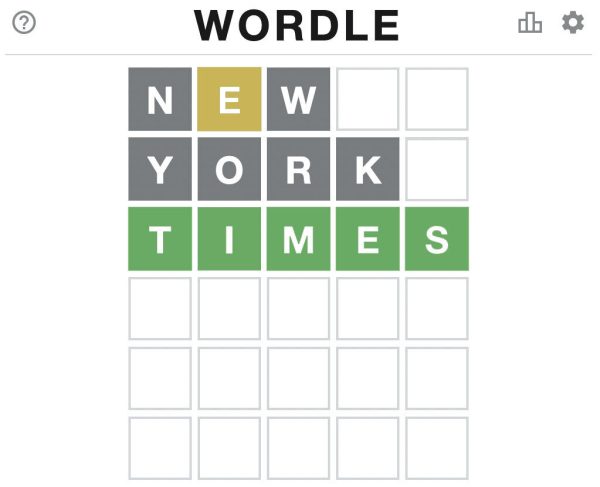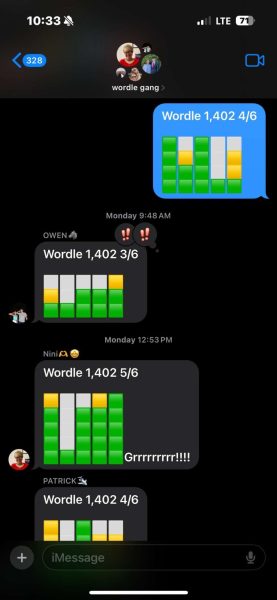Just in 2024 alone, 11.1 billion puzzles were solved in the New York Times Games section, with 5.3 billion of those being Wordle games. The popular New York Times game Wordle was first released to the world in October 2021, gaining instant attraction
Wordle was created by a man named Josh Wardle. He is a software engineer and lives in Brooklyn. Wordle came to be because Wardle’s partner loved word games, so he created a guessing game for just the two of them. To be a little different from his last name, he named it Wordle.
Since its creation, Wordle has become a daily habit for many people, including teachers and students. English Teacher Adam Litvinoff is an active player of New York Times games, specifically Wordle.

Doing the Wordle every day has become a routine for Litvinoff. In fact, it is the first thing he does in the morning.
“Every day. It’s the first thing that uses brain power in the morning, so after my alarm goes off, I go, and I get my phone and the Wordle is number one. That’s how I get my brain going.”
Litvinoff is not alone, though, as many students and staff start their day with a puzzle. But why? Most of the things that we do for pleasure, as
well as all of our addictions, are simply for the want of dopamine. Dopamine is released when we experience rewarding activities, it contributes to feelings of happiness and well-being.
That rewarding experience, whether it is for their streak or just the reward of figuring out the word, can cause a sense of addiction. For many people like Litvinoff, Wordle is a part of their routine and once streaks are started they don’t want to lose them. “I don’t stop until I get the Wordle, my longest streak is 100 days in a row.”
Beyond just being fun, these games can also have real benefits for the brain. Games and puzzles use cognitive skills like focus, working memory, critical thinking and deductive reasoning according to Hartford Healthcare.
Many believe playing these games can be beneficial, and while studies show they do work your brain, they don’t always benefit you. “Sure, crossword puzzles and Sudoku could be fun for some people. But if they’re distressing to you – or just not fun – they won’t be beneficial.” says Dr. Alberts from Hartford Healthcare.
NYT games like Wordle, spelling bee, and crossword have become major drivers of user engagement and

revenue, attracting millions of users and over a million premium game subscribers.
New York Times had bought Wordle in early 2022 because it fits perfectly with their strategy to attract and retain subscribers through engaging content like games, puzzles, and crosswords. It was already a viral hit and the Times saw it as a way to bring in new audiences, many of whom might later subscribe to their Games or All Access bundles.
Wordle has caused a lot of attraction, and many have gone as far as creating group chats and sharing their Wordle each day, like Sophomore Molly O’Donnell. “My family and I share our Wordle scores with each other each day, and it has become sort of a competition, which is why we keep playing every day.”
O’Donnell started playing Wordle because ”it was a fun word puzzle and I love seeing how many tries it takes my family to get it. “Wordle is something that she says brings her family together, and she loves doing it each day.



